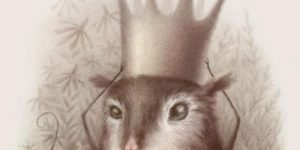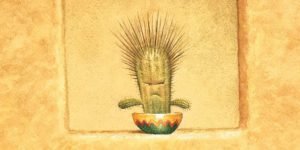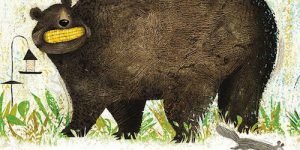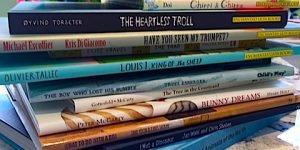In my world, a new publication from Lisbeth Zwerger is an event. At the risk of veering into hyperbole, she is the Arthur Rackham of her generation and will be remembered well beyond her time on earth. Zwerger’s latest is Tales From the Brothers Grimm, a collection of previously published stories and a few new yarns, including The Frog King or Iron Henry, The Brave Little Tailor, Briar Rose, The Poor Millers’ Boy and the Little Cat, and Hans My Hedgehog. The stories chosen by Lisbeth Zwerger to illustrate and include in this book speak to her quirky sensibilities and unparalleled talent for visual storytelling. From beginning to end, Tales From the Brothers Grimm is an impressive and extraordinarily beautiful overview of an astonishing career.
Although Lisbeth Zwerger has a recognizable style, her work continues to evolve. Early in her career, she favoured the sepias and high contrast hues of her predecessors, in particular the aforementioned Arthur Rackham with whom she “…landed in a Rackham-vortex.”* His influence can be seen in Hansel and Gretel and The Seven Ravens, which are included in Tales From the Brothers Grimm. Although these stories and others from this period are lovely and possess  the seeds of what was to come, they fall within the continuum of classic children’s illustration, rarely transcending it. As her colours brightened, so did her playfulness. The true genius of Lisbeth Zwerger emerged alongside a deeper, richer palette fully integrated with a wit and visual complexity well suited to the peculiar world and work of the Brothers Grimm.
the seeds of what was to come, they fall within the continuum of classic children’s illustration, rarely transcending it. As her colours brightened, so did her playfulness. The true genius of Lisbeth Zwerger emerged alongside a deeper, richer palette fully integrated with a wit and visual complexity well suited to the peculiar world and work of the Brothers Grimm.
One of the best examples of Zwerger’s mature style is The Frog King or Iron Henry. In the first illustration, the King’s youngest daughter moves swiftly down a hedgerow in an attempt to outrun the amorous frog. The hedge appears to be a slice of plant tissue as viewed from under a microscope. Beautiful of course, but unusual and strikingly inventive. Who would have thought to do this but her? The frog is persistent, and when he asks to join the young lady in bed (‘I want to sleep in as much comfort as you’), she responds by throwing him against the wall, where he turns into a handsome prince. If only it were that easy.









